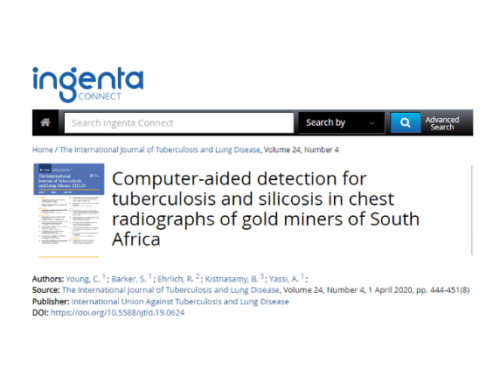Accuracy of Computer-Aided Detection of Occupational Lung Disease: Silicosis and Pulmonary Tuberculosis in Ex-Miners from the South African Gold Mines
🔗2022
🔗Journal/Publication: Int. J. Environ. Res. Public Health
🔗Read it in full version: https://doi.org/10.3390/ijerph191912402
Abstract
Background: Computer-aided detection (CAD) of pulmonary tuberculosis (TB) and silicosis among ex-miners from the South African gold mines has the potential to ease the backlog of lung examinations in clinical screening and medical adjudication for miners’ compensation. This study aimed to determine whether CAD systems developed to date primarily for TB were able to identify TB (without distinction between prior and active disease) and silicosis (or “other abnormality”) in this population.
Methods: A total of 501 chest X-rays (CXRs) from a screening programme were submitted to two commercial CAD systems for detection of “any abnormality”, TB (any) and silicosis. The outcomes were tested against the readings of occupational medicine specialists with experience in reading miners’ CXRs. Accuracy of CAD against the readers was calculated as the area under the curve (AUC) of the receiver operating characteristic (ROC) curve. Sensitivity and specificity were derived using a threshold requiring at least 90% sensitivity.
Results: One system was able to detect silicosis and/or TB with high AUCs (>0.85) against both readers, and specificity > 70% in most of the comparisons. The other system was able to detect “any abnormality” and TB with high AUCs, but with specificity < 70%.
Conclusion: CAD systems have the potential to come close to expert readers in the identification of TB and silicosis in this population. The findings underscore the need for CAD systems to be developed and validated in specific use-case settings.

